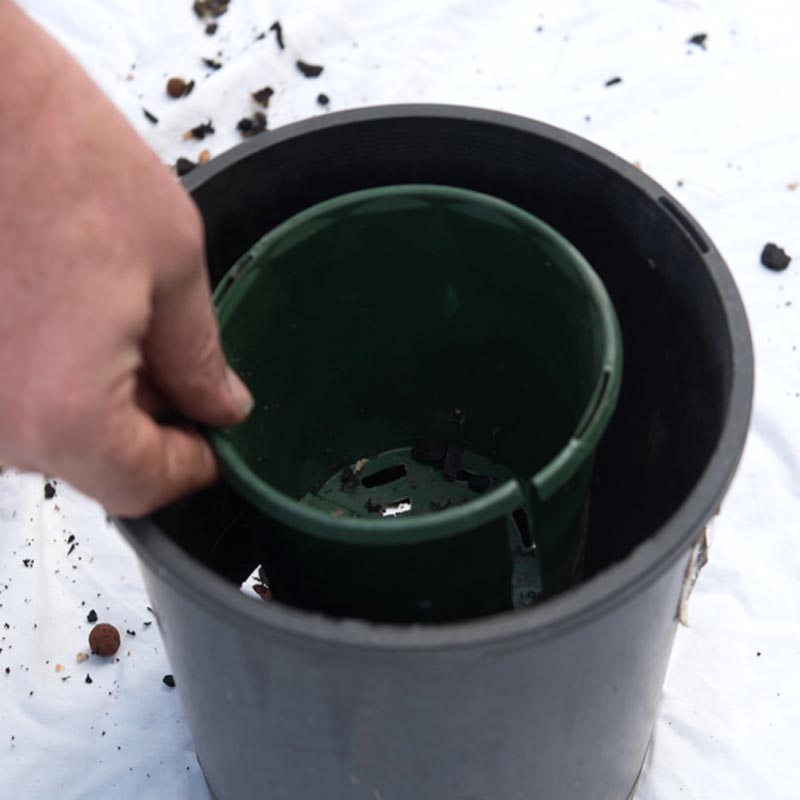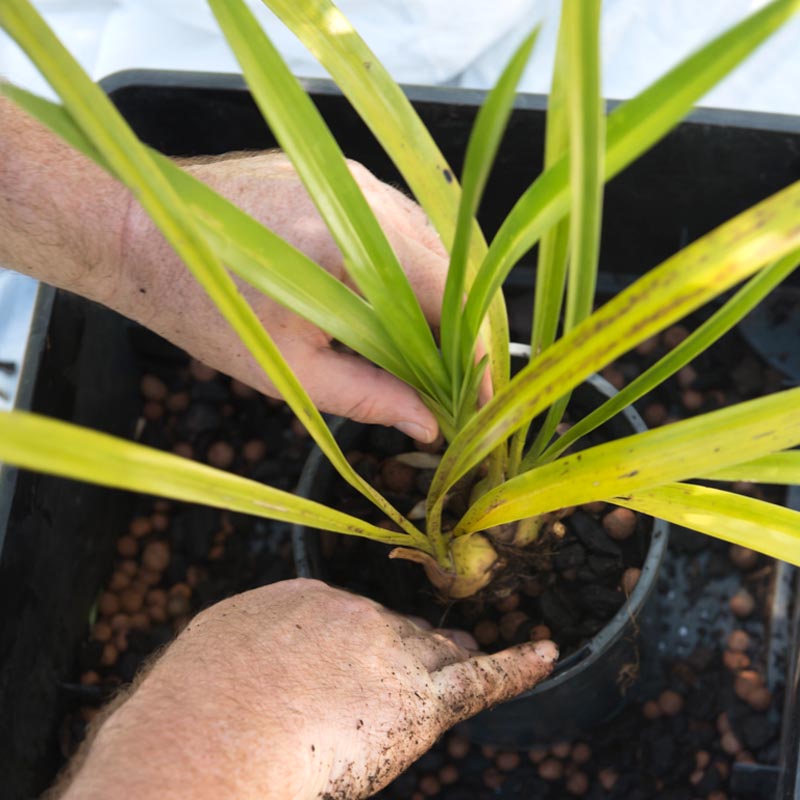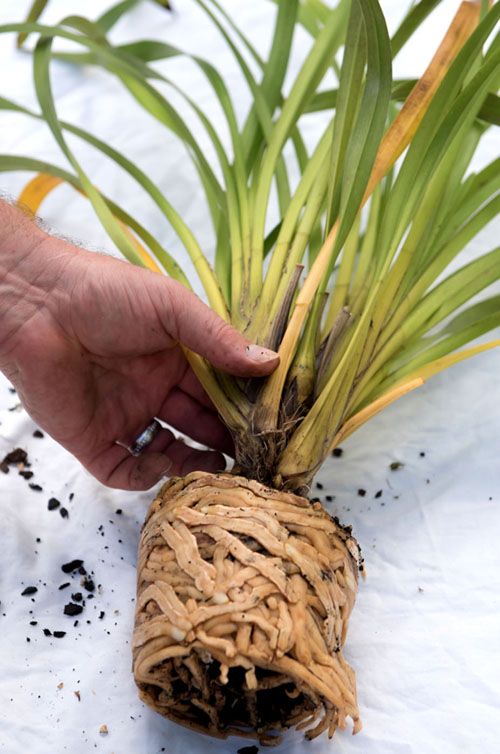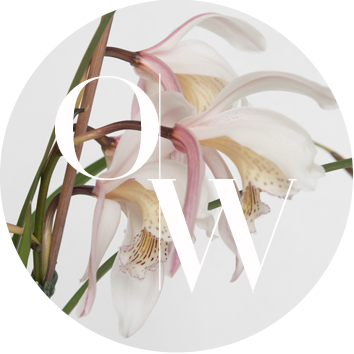Potting On
Potting on or Re-potting Cymbidium Orchids
Re-potting Cymbidium orchids is a constant task in most collections, especially large ones!
A Cymbidium orchid plant which is likely to outgrow it’s present pot within a year needs potting on or re-potting, or dividing.
Re-potting Cymbidium orchids is pretty easy and below is a quick lesson on how to do it!
If the decision is to pot on, select a new pot which will give room for at least two year’s new growth. At that point it needs potting on again, or dividing. But it is important to give the plant room to grow.
I would never pot on from a 175mm (7 inch) to 200mm (8 inch) pot. You would most likely have to repot again next year, so definitely go bigger!
From a 175mm pot, I would go straight to a 250mm (10 inch) pot. From a 200mm pot, I would probably repot into a 250mm (12 inch) pot. Potting into an even bigger pot, will create a monster, specimen size, plant. These huge plants might look fabulous in flower, but will be difficult to pick up and move later!

I have a few of these specimen sized plants, in 450mm pots. With masses of green leafy bulbs they look absolutely stunning when in flower with 7, 10 or more spikes each year. They might not win on the show bench, but nevertheless they look amazing!

Some varieties of Cymbidium orchid, when potted into huge pots, form many back-bulbs. Consequently, after a few years they end up being a pot with lots of back-bulbs in the centre of the pot, and a ring of green bulbs around the edge of the pot. If that’s the case, then it’s time to repot, or divide and strike the back-bulbs.
Re-potting Cymbidium orchids is easy and should not set a plant back.
Re-potting Cymbidium orchids, and dividing them, is best done in spring or autumn. But owners of big collections do it all year or when resources are available. I repot or divide at any time of the year, although I try to avoid the hottest part of the year. Cymbidium orchids are tough plants and they can take it and recover quickly. As long as the plant is big enough, and there are spare back-bulbs to provide nutrient.
It’s a simple process. Just knock the plant from it’s old pot. If the rootball is not thoroughly bound up, just place it in the bigger pot, with a few handfuls of new potting mix in the bottom of the pot.
Centralise the plant, or place the old back-bulbs closer to the edge of the pot to allow more room to grow. Then add your potting medium down the sides of the rootball, until the pot is almost full. Shake the pot and plant as you fill it, to try to eliminate spaces with no potting mix.
Stop filling at about 25mm (one inch) from the top, and add some organic fertiliser, then fill the pot, covering the fertiliser.
Potting Tips
Ensure that the plant is not sitting too high in the pot. It is better to pot Cymbidium bulbs a little deeper than too shallow. Getting the right level is best, with your mix just covering the base of the bulb.
We would add the equivalent of about 2 level soup spoons of fertiliser (25 grams) to a 175mm pot (a small handful), 3 spoons to a 200mm pot and 4 spoons to a 250mm pot. At this stage I use Neutrog Strike Back for Orchids or Neutrog Seamungus. These products seem to encourage fabulous root growth in plants just repotted, but there are other fertilisers out there also.
The soup spoon measurement is suggested, because it is universal and convenient, and handfuls can vary in size markedly. But don’t use the spoon again for your soup!
If the plant to be potted on is thoroughly root-bound, either remove some of the existing roots, or at least tease them out, to encourage them to grow into the new potting mix.
A root-bound plant just placed in a larger pot, without root pruning, or teasing out of the roots, is likely to just sit there. It probably won’t send the roots into the new growing medium. And it will not thrive in that condition. The roots need to be given dome direction!
I use a simple black plastic pot for Repotting Cymbidium orchids, and have found that this is probably the best pot for them. They are cheap, easy to work with and provide good drainage. And they are also relatively easy to cut off a super potbound plant!

Orchid Wise Society
With over 30 years of experience joining the Orchid Wise Society is a great way to join other orchid grower enthusiasts around the world. We promise not to overload your inbox with unnecessary rubbish, instead we pride ourselves on providing relevant & interesting information with regards to all things Cymbidium orchids.
We welcome your feedback on

